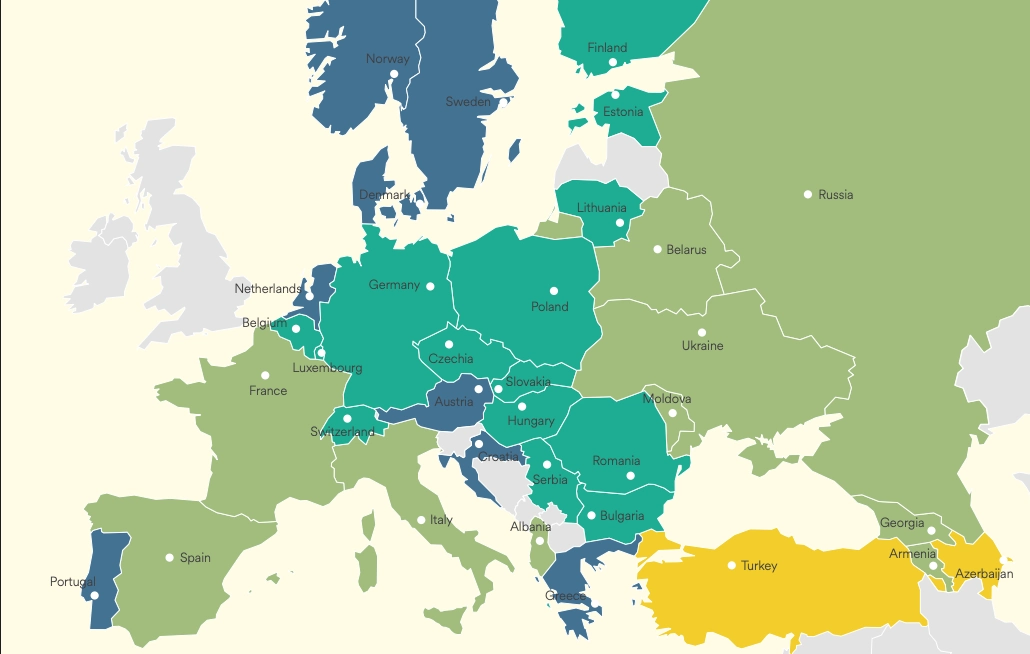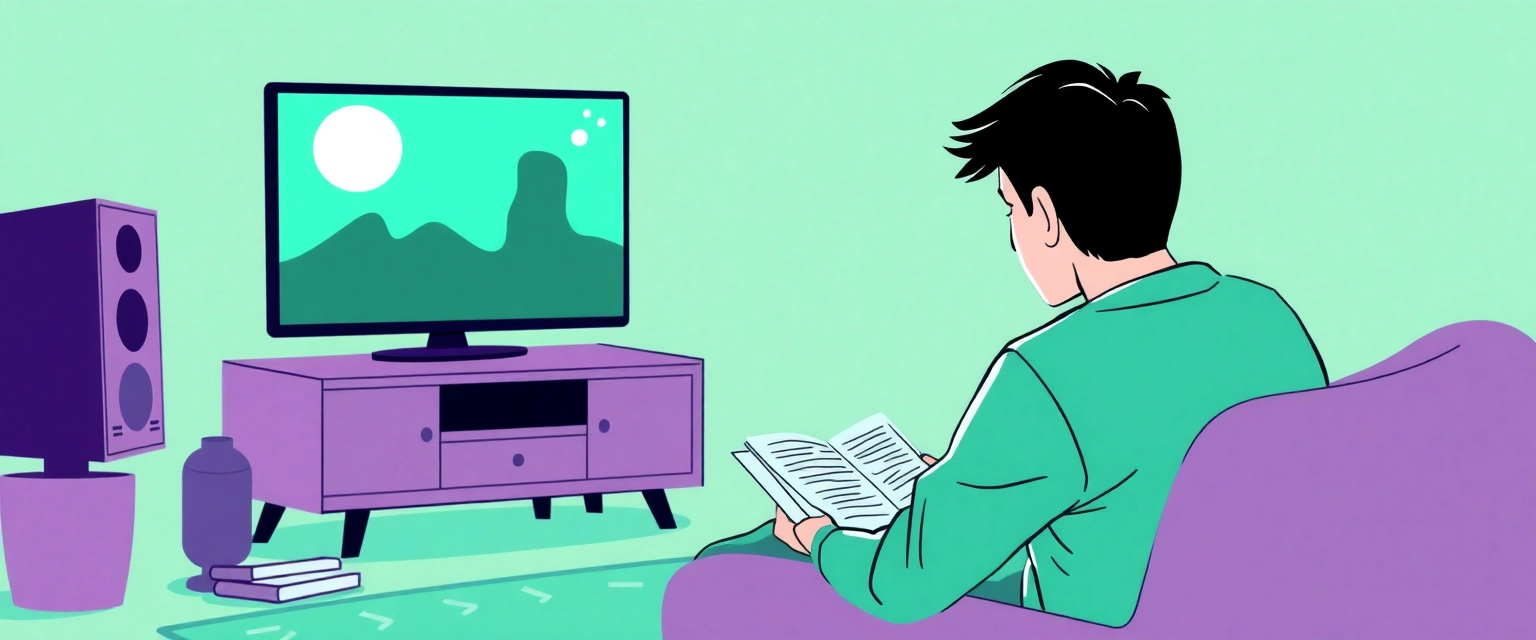
Can You Learn a Language by Watching TV?
📱 Quick Version Available!
Watch the short video for key highlights, but don't miss the in-depth insights in the article.
If I told you that one of the best tools for learning languages isn't a a classroom or app, but Netflix, would you believe me? It may sound strange, but movies and series can be incredibly powerful for improving your listening comprehension and learning vocabulary and grammar in context.
The evidence is compelling: there's a clear divide across Europe that perfectly illustrates this. Northern European countries consistently rank at the top of English proficiency rankings, while Southern European countries lag behind. The difference? How they watch TV.

Let's look at the numbers from the 2024 EF English Proficiency Index:
Top Second Language English-Speaking Countries in the World:
- Netherlands (#1)
- Norway (#2)
- Sweden (#4)
Southern Europe:
- Spain (#36)
- Italy (#46)
- France (#49)
- Türkiye (#65)
What's the key difference? Subtitles vs. dubbing.
A groundbreaking study called "TV or not TV? The impact of subtitling on English skills" found compelling evidence:
There is a large positive effect for subtitled original version broadcasts, as opposed to dubbed television, on English proficiency scores.
The research shows that citizens of countries where television is broadcast in the original version have significantly better English vocabulary, grammar, and listening comprehension than those in countries where programs are dubbed.
The magnitude of this effect is remarkable: equivalent to 16.9% (one and a half standard deviations) of the average level of English skills.
Every time you turn on Netflix or YouTube, you're getting language exposure and listening practice. You're learning through massive amounts of input without even trying. This is at the core of effective language acquisition.
Comparing Portugal (#6) vs. Spain (#36) is particularly telling.
Spain and Portugal share many geographical and cultural traits. But the number of Spanish speakers is double that of Portuguese speakers. Again, maybe in part because of this, Portugal uses subtitling while in Spain television is dubbed. And, as a result, Portugal's results in the TOEFL exams are much better than Spain's.
Language learning thrives on receiving large amounts of Comprehensible Input. Exposure to content that's understandable in context. Series and movies are excellent for this because visual information reinforces the meaning of words and phrases you hear.

You're not just having fun, you're improving your listening skills and expanding your vocabulary effortlessly.
The way you use subtitles can make or break your learning process. Here's the right approach:
✅ DO:
- Turn on subtitles in the language you're learning, not your native language
- Choose content with closed captions (they mirror exactly what's being said)
- Focus on the target language audio while reading the target language subtitles
❌ DON'T:
- Rely constantly on native language subtitles (your brain will take the easy route)
- Skip subtitles entirely if you're a beginner
💡 PRO TIP: If you need support, activate native language subtitles only occasionally, not constantly.
Sometimes content in your target language isn't available in your region. A simple solution is using a VPN to access a larger library. For example, if you're learning French, change your location to France to access more authentic French content.
If you're just starting out, watching series in a new language can feel overwhelming. Make it more accessible:
Start with familiar content:
- Rewatch series or movies you've already seen in your native language
- Knowing the story lets you focus on language rather than plot
Choose simpler content:
- Children's shows and cartoons use clearer, simpler language
- Animation often has more expressive visual cues
Content progression:
- Animated movies → Family shows → Teen dramas → Adult content
- Comedy shows → Action series → Drama series
Want to supercharge your learning? Try shadowing: repeating what characters say almost simultaneously, imitating their pronunciation and intonation.
How to shadow effectively:
- Start with short, simple dialogues
- Pause the movie and repeat what the character said
- Focus on rhythm and intonation
- Practice with the same scene multiple times
- Gradually increase complexity
This technique bridges the gap between passive listening and active speaking practice.
| Level | Content Type | Examples | Focus |
|---|---|---|---|
| Beginner | Children's shows, familiar movies | Disney films, simple sitcoms | Basic vocabulary, clear pronunciation |
| Intermediate | Teen shows, light dramas | Friends, Modern Family | Conversational patterns, cultural context |
| Advanced | News, documentaries, complex dramas | Netflix originals, local news | Natural speech, cultural nuances |
Research consistently shows that subtitled content provides multiple benefits:
Cognitive advantages:
- Simultaneous visual and auditory processing
- Contextual vocabulary acquisition
- Natural grammar pattern recognition
- Cultural immersion
Practical benefits:
- Flexible learning schedule
- Engaging, entertaining content
- Real-world language usage
- Motivation through enjoyment
Surprisingly, only 12% of Europeans think television is useful for learning foreign languages, yet it's one of the most effective methods available.
YouTube channels: Find content creators in your target language Streaming platforms: Explore local services (BBC iPlayer, France TV, Twitch etc.) Podcasts with video: Many podcasts now offer video versions Live TV: News channels provide current, relevant content
At Lenguia, we believe in the power of comprehensible input through engaging content. Our platform creates personalized content at your level that matches your interests, because when content is compelling, learning happens naturally.
We've built our entire approach around the same principles that make TV-based learning so effective: natural language acquisition through context. Reading on Lenguia and listening to our stories and podcasts with transcripts is the perfect edition to your TV exposure!
- Cantina Marketera. (n.d.). Shadowing: ¿Qué es y cómo potencia tu aprendizaje efectivo?. Retrieved March 19, 2025, from https://cantinamarketera.com/shadowing-que-es-y-como-potencia-tu-aprendizaje-efectivo/
- Comet English. (n.d.). Shadowing: una técnica para mejorar tu pronunciación en inglés. Retrieved March 19, 2025, from https://cometenglish.es/shadowing/
- English with Flow. (n.d.). La técnica del shadowing. Retrieved March 19, 2025, from https://www.englishwithflow.com/la-tecnica-del-shadowing/
- European Commission. (2006). Europeans and their Languages. Special Eurobarometer 243.
- Hable Mejor Inglés. (n.d.). ¿Qué es «shadowing» en el aprendizaje de los idiomas?. Retrieved March 19, 2025, from https://www.hablamejoringles.com/que-es-shadowing-en-el-aprendizaje-de-los-idiomas/
- Leonardo English. (n.d.). ¿Qué es el shadowing y por qué debería utilizarlo para mejorar su inglés?. Retrieved March 19, 2025, from https://www.leonardoenglish.com/blog-es/shadowing
- Lingopie. (2024). ¡Aprende Idiomas Viendo Netflix!. Retrieved March 19, 2025, from https://es.lingopie.com/blog/aprende-idiomas-viendo-netflix/
- Talkpal. (n.d.). Usar la técnica del shadowing para mejorar la fluidez en idiomas. Retrieved March 19, 2025, from https://talkpal.ai/es/usar-la-tecnica-del-shadowing-para-mejorar-la-fluidez-en-idiomas/


